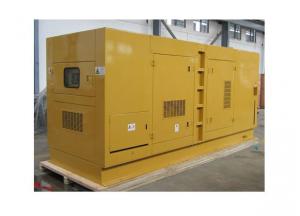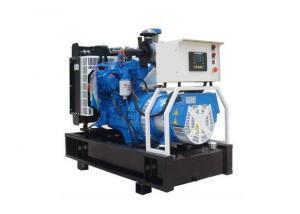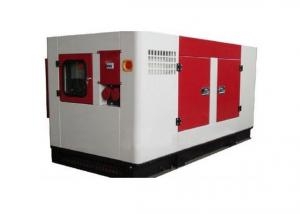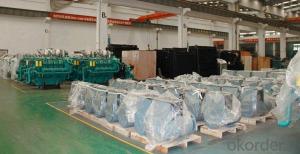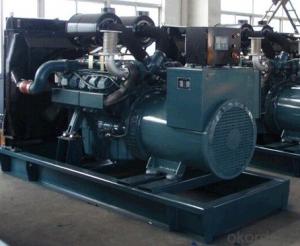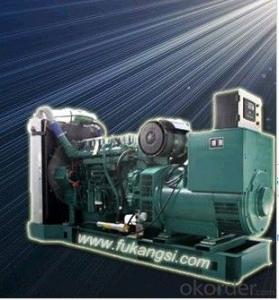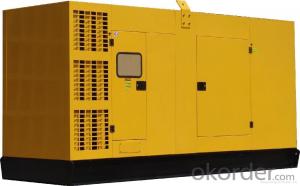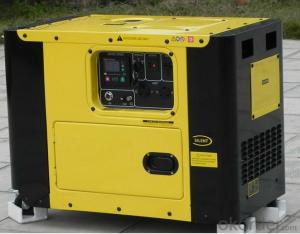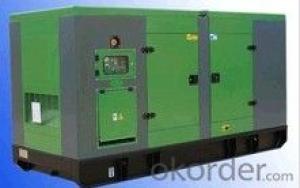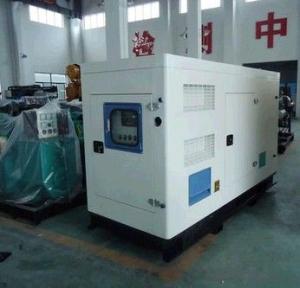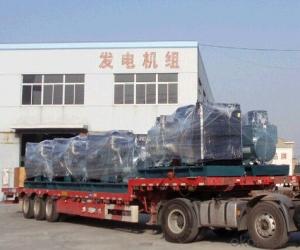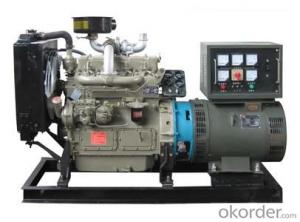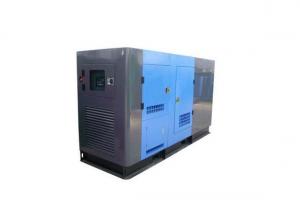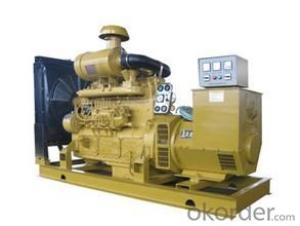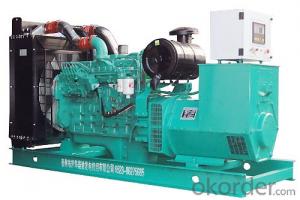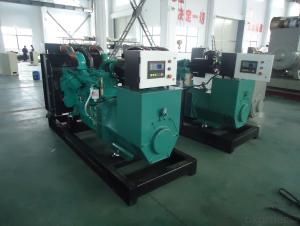Product list of Korea Doosan Engine type (DOOSAN) 17
- Loading Port:
- Shanghai
- Payment Terms:
- TT OR LC
- Min Order Qty:
- 1 unit
- Supply Capability:
- 300 unit/month
OKorder Service Pledge
OKorder Financial Service
You Might Also Like
Specifications
60Hz 55KW to 573KW Doosan Series Diesel Generator
1) Generator factory direct sale
2) Doosan with Mecc alte
60Hz 55KW to 573KW Doosan Series Diesel Generator
DOOSAN started producing diesel engines for the first time in 1958. Doosan production facility is in Incheon, Korea and Doosan went into full production under the license of MAN technology in 1975, and ISUZU technology in 1979. Furthermore, Doosan began to produce the CNG engine in 1998, so our reinforced line up from Diesel engine to Natural Gas engine could supply more choices and meet the various needs of our customers.
Doosan acquired Daewoo Machine in 2005 to strengthen the ability of designing and producing the engine.
Features of Genset Powered by Doosan:
1. International Warranty Service
2. Short delivery time
3. With ISO9001& CE certification
4. High performance cost
5. Coupled with Stamford alternator, Leroy Somer alternator or Mecc Alter alternator
6. Perfect after-service network
7. Power range from 60kva to 700kva
8. Rigorous test including 50% load, 75% load, 100% load and 110% load
9. Warranty: One year or 1000 Working Hours from the shipment date, whichever comes first.
- Q: I heard about the reactor and could someone tell me the story and what could happen thx.
- I really like how you spelled nuclear
- Q: If i am using a permanent magnet dc motor as generator then how should i calculate how much electricity the motor will produce ? or lets say i want to produce 1kw power with permanent magnet dc motor then how much hp motor i shd choose
- I'm not an expert on this, but I'll give it my best guess. To try to point you in the right direction. First, you need to know the torque of this magnet. 1 horse power 0.74569 kilowatts So to get a 1 kilowatts, you need 1.35962 horsepower. The motor will have a certain efficiency. I do not know if this is factored in to the motors power rating, however if the efficiency is, say, 90%. Then you will need to divide the horse power by 0.9 to get the correct horse power rating. Is this a motor part of a diesel / fuel generator, or is it part of a wind turbine / water turbine?
- Q: If I have to put gasoline 8h/day on a 50 KW Generator, what would be the Cost per Kwh or the Annual Cost? Thanks!
- 50 Kilowatt Generator
- Q: I want to know if someone put gasoline instead of diesel in my generator. I'm use to seeing dark yellow fuel in it and now the muffler is red hot
- They may have put gas in it. Drain it all out and put in diesel. Get the off road stuff with the red dye and then you will be able to tell better next time. Also get a locking cap so that only you can get into the tank.
- Q: Have a big V12 Diesel Generator what is the purpose of the governor / actuator and also the Speed and Load Controller?
- The governor keeps the motor from running faster than a set rate, an actuator receives an input from a button and causes a mechanical device to engage. Speed and Load controllers determine how fast the generator motor should turn over for a certain electrical demand, as in number of devices plugged in to the electric socket.
- Q: Hi -- looking for specifically Lister Petter Diesel Generator parts distributor in central Cal. Electrical parts -- cycle timers, a/c disconnects, etc.,. The main company (ListerPetter)is closed until after the 5th, and this machine powers my home, in the process of battery conversion project, and looking to finish this project between th holidays. THis is my hubbys endeavor -- I am just the messenger -- so I hope these questions make sense, please feel free to email me more details or anyhelp you think useful. Thanks everyone
- Depending on where you live try the on line yellow pages. Especially in large farming areas, like Fresno or Bakersfield, Stockton etc. Their will be equipment parts shops that will help you find what you need if they do not have it.
- Q: I live in KARNATAKA,INDIA.Due 2 powercuts i am plannin 2 buy 1 of the aboveI want my answer URGENTLY
- of okorder
- Q: I thought we had some smart people in government. Guess not. Read somewhere that one station was pumping it out themselves.NO NEED FOR EXPENSIVE 20,000 WATT DIESEL GENERATOR. Wake the F**K up people!
- Yea. Drill by using the grate? Drilling through technique of metallic creates sparks and sparks makes gas fumes bypass strengthen. Plus the position are the metallic filing going as you drill? acceptable in to the tank with the gas. In needed Park that they had 2 turbines gigantic sufficient to capacity four hundred houses each and each and every for use for the lengthy island Marathon. Why now no longer hook considered one in each and every of them as a lot as a pair gas stations each and every. In places you've gotten some stations close together do no longer you?
- Q: I need a generator that will power alot of stuff, preferably cheap as possible, or any other power source of that kind.it will need to power about 5 normal appliances and a 600w bulbany ideas
- Cheap as possible - go Chinese if you want to use it once a year and don't care if it goes paf at any time. Honda makes some good units if you want quality and back up. You need to add up the power draw of your five normal applications and your 600w lighting load. Add 25% and the unit will be adequate. If your appliances have induction motors you will have to have at least three times the rated power of the motor(s) to get them to start safely. If you need more than 3000 watts of constant power you should consider diesel, for longevity go for slow speed i.e.1500 or 1800 rpm engine speed. Price will range from $400 for a 2500w Chinese thingy up to at least $14,000 for a fully enclosed automatic 12KvA super silenced slow speed diesel unit on a slide. Running costs get high with the bigger petrol units. Inverters are good, but you will still have to generate power some how for the batteries - wind, water, solar, generator etc. Will be more expensive to set up but will be better long term for a cabin or similar. I'll tack on a couple of links below. Good luck.
- Q: I have two deisel engines and two tank feeds, how can I connect the genset (4KVA) . I am conerned when the engines are idling or even running they will start the genset. I do not want to put an extra tank.Thank you
- If your tank has another port on it for a fuel line that is where you hook up. If not go to the supply line at the tank and put in a T fitting and then a shut off valve for each engine. Run the supply line to the generator from that T. You will also need a return line from the generator that you can T into at the return line from the engine at the tank. Many people that convert from gas to diesels run into these same problems. Often a fitting is made up that is put in the fuel fill line to allow for the return line. The generator supply and return lines will be smaller then the engine fuel lines. Running the engines will not cause the generator to start.
Send your message to us
Product list of Korea Doosan Engine type (DOOSAN) 17
- Loading Port:
- Shanghai
- Payment Terms:
- TT OR LC
- Min Order Qty:
- 1 unit
- Supply Capability:
- 300 unit/month
OKorder Service Pledge
OKorder Financial Service
Similar products
Hot products
Hot Searches
Related keywords



